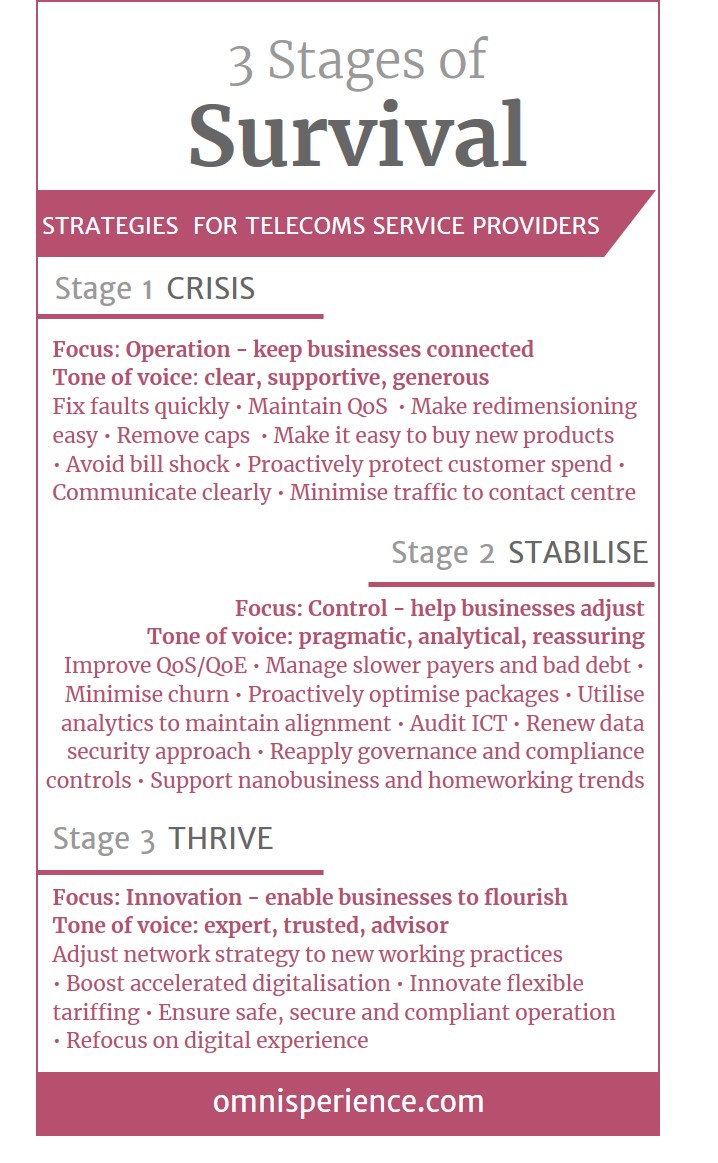The general press has adopted the term ‘new normal’ for life beyond lockdown, in fact new normal is simply a more advanced state of digitalisation – most of which we anticipated but which has been accelerated by COVID-19 responses.
Businesses will move through three stages of recovery over the next 12 months – moving through these at different speeds depending on the vertical they operate in, the firm’s individual response, the geographical market in which it operates, and so on.
Initially, the focus of ICT response was on crisis management, enabling businesses to survive the COVID-19 crisis and continue to operate. But firms are now rapidly moving into the second stage of response – we call this ‘stabilisation’ – which sees a readjustment and realignment taking place as IT normalisation kicks in. Part of this is to audit the initial business response and reintroduce normal controls and governance – such as OPEX and CAPEX management, IT security and compliance.
Telecoms service providers need to be aware of this evolution and adjust their offerings and approaches accordingly, in order to stay aligned with the evolving needs of their business customers.
Beyond this stage, lies what is commonly being termed the new normal, a more advanced stage of digitalisation in which businesses begin to thrive once more by utilising the investments and experiences of the previous two stages. However, working lives and practices will change as a result of what has happened and ICT providers need to adjust to support this.
Over the three stages of response, the focus will shift from operation to control to innovation. Likewise, B2B service providers need to adjust in an agile fashion to meet the evolving needs and focus of their business customers.

[…] businesses prepare for the second phase of COVID-19 response – stabilisation – the need to secure the new mode of business is swiftly returning to […]